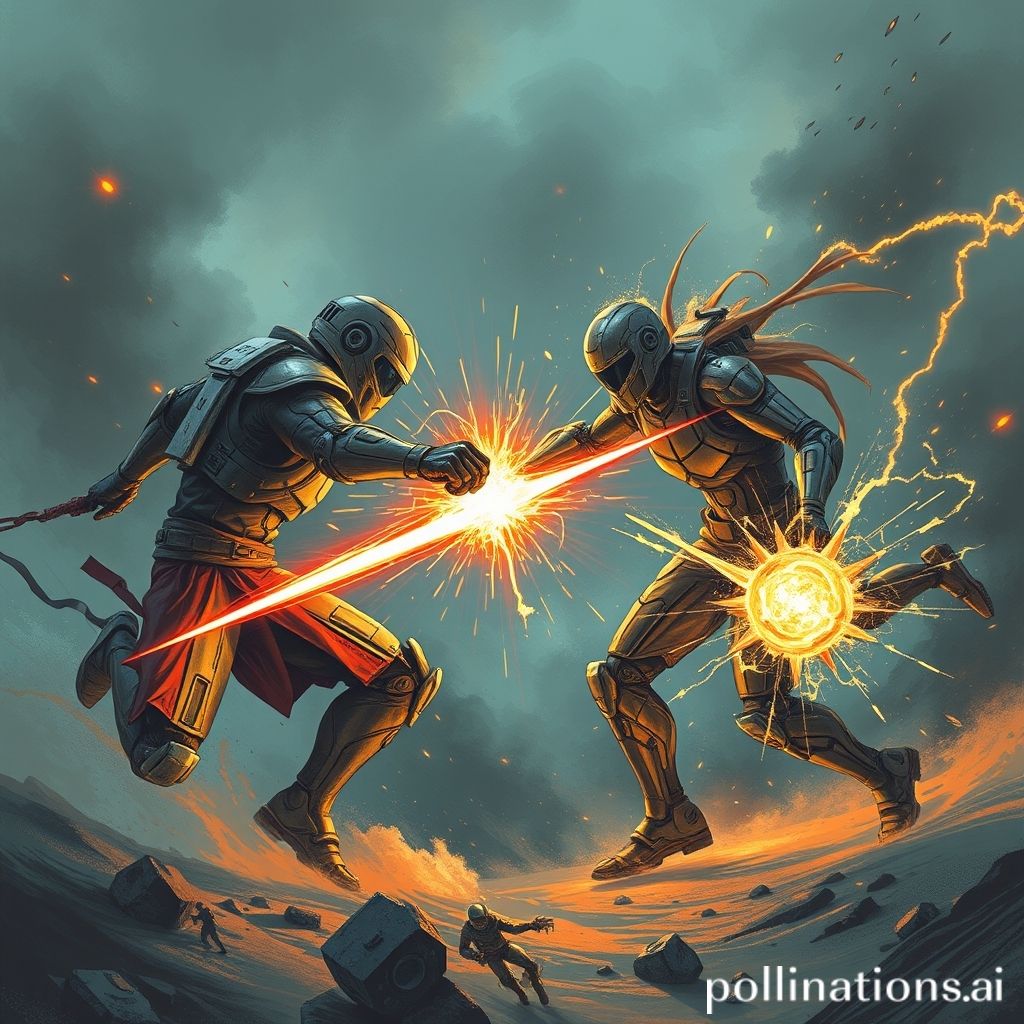Table of Contents
- Introduction
- Introduction to AI-powered writing tools
- How Turnitin works in detecting plagiarism
- Evaluation of Turnitin’s capability in detecting AI-generated content
- Challenges faced by Turnitin in detecting AI writing
- Emerging technologies to improve Turnitin’s detection abilities
- Conclusion
- Frequently Asked Questions
Introduction
Artificial Intelligence (AI) and Turnitin, the leading plagiarism detection platform, are locked in a relentless battle. This clash of technological titans has captivated the academic community and raised profound questions about the extent to which AI can surpass human intellect in detecting and preventing plagiarism.
Imagine a showdown between AI and Turnitin, as they face off in a digital arena. The clash is fierce, with advanced algorithms analyzing vast databases of academic papers, scanning for signs of duplicity. But who will emerge victorious in this epic battle of detection?
As the stakes grow higher, it becomes increasingly vital to unmask the intricacies and nuances of this conflict. How does AI leverage its machine learning capabilities to identify plagiarism? And how does Turnitin’s database of academic content, built over decades, continue to withstand the onslaught of AI’s advanced algorithms?
In this article, we delve deep into the heart of the AI versus Turnitin battle, peeling back the layers that shroud this captivating contest. Join us as we explore the inner workings of AI and Turnitin, uncover the challenges they face, and discover the implications for students, educators, and the future of academic integrity.
Introduction to AI-powered writing tools
Alright folks, let’s dive into the world of AI-powered writing tools! These bad boys have been causing quite a stir lately, and there’s a lot to unpack. So, picture this: you’re a student working on a paper, and you’re struggling to find the right words. Well, fear not, because AI is here to save the day!
Now, you might be wondering, can Turnitin, the notorious plagiarism detection tool, sniff out AI-generated content? Well, it’s a cat-and-mouse game, my friend. While AI writing tools have come a long way, they do leave some breadcrumbs behind.
Let me tell you a little anecdote. Once upon a time, a student used an AI writing tool to craft their essay. They thought they had outsmarted Turnitin, but lo and behold, the plagiarism detection beast caught on! It’s like a game of hide and seek, where Turnitin is the laser-eyed seeker and AI-generated content is the sneaky hider.
But hey, don’t let that discourage you from exploring the world of AI-powered writing tools. They can be a godsend when you’re facing writer’s block or need a creative boost. Just remember, like any tool, they should be used responsibly and ethically. So, let’s buckle up and take a closer look at how these AI-powered writing tools work, shall we?
How Turnitin works in detecting plagiarism
Alrighty, let’s dive into the nitty-gritty of how Turnitin, the plagiarism detection tool, works its magic to sniff out any funny business in your writing. Picture this: you’re a sneaky student trying to pass off someone else’s work as your own, thinking you can outsmart the system. Well, think again!
Turnitin is like a bloodhound on the hunt for plagiarism, sniffing out any signs of foul play. Its powerful algorithms analyze your submitted text and compare it against a massive database of sources, including web pages, academic journals, and previously submitted student papers. It’s like an army of vigilant librarians sleuthing through heaps of information.
Now, here’s where the irony kicks in. You know how you sometimes have to use Turnitin before submitting your own work? Well, guess what? Your papers are stored in that massive database too! So, using Turnitin to plagiarize is like stealing from yourself and expecting not to get caught. Talk about shooting yourself in the foot!
Turnitin also has this cool feature called the Originality Report, which highlights any matching text and provides a similarity score. This helps instructors identify potential instances of plagiarism and, if needed, take the appropriate action.
So, remember, when it comes to outsmarting Turnitin, there’s no fooling this vigilant bloodhound. Originality is key, my friend!
Evaluation of Turnitin’s capability in detecting AI-generated content
Alright folks, let’s dive into the deep waters of Turnitin and its ability to sniff out those sneaky AI-generated writings. Now, you might be thinking, can this digital watchdog really tell the difference between a human’s work and content churned out by a machine?
Well, my friend, Turnitin is armed with some serious artificial intelligence firepower. It’s like having Sherlock Holmes and Watson rolled into one, ready to solve the case of the plagiarized paper. This software is designed to compare your piece with a vast database of other works, seeking out similarities like a bloodhound on a scent.
But here’s the catch, some AI-generated content is so advanced that it could leave Turnitin scratching its digital head. Picture this: an AI essay so well-crafted, it could pass for the work of a seasoned wordsmith. It’s like a wolf in sheep’s clothing or a magician pulling a rabbit out of a hat. Will Turnitin be fooled? That remains to be seen.
However, it’s important to remember that Turnitin is constantly evolving. Its developers are no slackers, always on the lookout for new tricks and techniques to catch those AI-generated masterpieces. So, even if the software might not catch everything now, it’s working hard to stay one step ahead.
Challenges faced by Turnitin in detecting AI writing
Well, let’s talk about the challenges faced by good ol’ Turnitin in detecting AI writing. Now, Turnitin is like a bloodhound, sniffing out any signs of plagiarism in a paper. But when it comes to unravelling the mysterious realm of AI writing, it can stumble upon some hurdles.
First off, AI writing can be a chameleon, blending seamlessly into the fabric of human-like words. It’s like looking for a needle in a haystack while wearing sunglasses at night. Turnitin may have its algorithms and fancy software, but sometimes these AI-generated essays can slip through undetected.
Another challenge lies in the sophisticated nature of AI writing tools. These AI bots are constantly evolving, learning from vast amounts of data, becoming smarter and craftier by the minute. It’s like trying to catch a greased pig at a county fair. Turnitin must keep up with the ever-changing landscape of AI technology, but it’s not an easy task.
Lastly, AI writing can play mind games with Turnitin. These algorithms are designed to mimic human writing styles and patterns, making it difficult to distinguish between authentic human works and AI-generated content. It’s like trying to solve a riddle wrapped in an enigma – a real brain teaser.
Emerging technologies to improve Turnitin’s detection abilities
Alright, folks. Buckle up because we’re diving into the world of Turnitin and AI writing detection. Now, let me tell you a little story. Just imagine you’re a student, and you’ve got an essay due. But hey, you’ve found this fancy AI writing tool that can churn out a perfectly polished paper in minutes. Sounds like a dream come true, right? Well, not so fast.
Turnitin, the ultimate guardian of academic integrity, has been evolving too. They’re harnessing some epic emerging technologies to stay ahead of the game. Picture this: a supercharged AI-powered algorithm that can sniff out AI-generated content like a bloodhound on a mission. It’s like Turnitin has a sixth sense, detecting those sneaky attempts to deceive the system.
But here’s where the irony comes in. Just as technology is advancing, so are the creators of AI writing tools. They’re slyly tweaking their algorithms to leave fewer footprints, like a ninja in the night. So, Turnitin has to keep up its game, constantly enhancing its detection abilities to outsmart these crafty AI writing machines.
Now, I won’t spill all the beans just yet, but let’s just say Turnitin isn’t relying solely on AI to fight AI. They’re exploring a whole arsenal of innovative technologies – from machine learning and natural language processing to deep neural networks. It’s like a battle between titans, folks, with Turnitin leading the charge to preserve academic honesty.
So, while AI writing tools keep evolving to fly under the radar, Turnitin is rising to the challenge, determined to keep academic integrity alive and kicking. It’s a never-ending race of wits and innovation, my friends.
Conclusion
Emerging technologies to improve Turnitin’s detection abilities
Turnitin, the ultimate guardian of academic integrity, has been evolving too. They’re harnessing some epic emerging technologies to stay ahead of the game. Picture this: a supercharged AI-powered algorithm that can sniff out AI-generated content like a bloodhound on a mission. It’s like Turnitin has a sixth sense, detecting those sneaky attempts to deceive the system.
But here’s where the irony comes in. Just as technology is advancing, so are the creators of AI writing tools. They’re slyly tweaking their algorithms to leave fewer footprints, like a ninja in the night. So, Turnitin has to keep up its game, constantly enhancing its detection abilities to outsmart these crafty AI writing machines.
Now, I won’t spill all the beans just yet, but let’s just say Turnitin isn’t relying solely on AI to fight AI. They’re exploring a whole arsenal of innovative technologies – from machine learning and natural language processing to deep neural networks. It’s like a battle between titans, folks, with Turnitin leading the charge to preserve academic honesty.
So, while AI writing tools keep evolving to fly under the radar, Turnitin is rising to the challenge, determined to keep academic integrity alive and kicking. It’s a never-ending race of wits and innovation, my friends.

